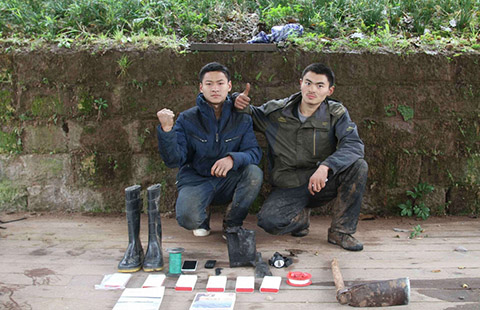Quake reveals disparity between China's east, west
(Xinhua) Updated: 2012-09-16 14:53There were only 1,500 registered vehicles in Yiliang county before the earthquake but around 4,500 vehicles from government departments, the army and volunteers swarmed into the county seat, causing traffic jams which affected the rescue efforts, according to the rescue headquarters.
For He Chaoxian, a surgeon of the county hospital, the insufficient medical facilities and personnel, as well as lack of experience in emergency response was regrettable.
Medical bandages ran out within two hours and the number of doctors were far from enough, he said.
"If we carry out craniotomy operations on several patients at the same time, instead of one by one, we can save more lives," he added.
Yiliang county has few development opportunities, so the government pins its hope on the exploitation of mineral resources underneath the mountain.
The increasing number of mines and immigrant workers has put more pressure on the already fragile environment, said Tian Tingshan, executive deputy director of Geological Disaster Emergency Center with the Ministry of Land and Resources.
The population of Luozehe town increased from 55,000 in 2009 to 68,000 in 2011, many of whom are workers from neighboring cities and provinces. The population density of the town is twice as much as that of the province, said Tang Hu.
The overdevelopment of resources has damaged the ecological system and the natural shield against geological disasters has been disabled. The forest coverage of Yiliang county is only 10 percent, much lower than the provincial level of 46 percent, said Zheng Baohua, director of the Rural Development Institute with the Yunnan Provincial Academy of Social Sciences.
Traditional agriculture is no longer attractive to young villagers, who prefer to work in the more prosperous coastal and eastern regions. The remaining elderly people and children are too weak to fight against natural disasters, said Zheng.
Zheng suggests Yiliang county government should move residents living in the mountains to towns and communities and improve the infrastructure, including roads and water facilities.
He also called for the government to shut down small mines and bring in big and medium-sized companies to better tap the mineral resources in a more environment-friendly way.
Developing the forestry in the mountains would help, he said.
Social fairness called for
As China started opening up to the world in 1978, the eastern region was given priority for development. Booming industrialization and urbanization pulled millions of people out of poverty while the western region, especially the rural areas, fell behind.
Although the speed of economic growth in West China surpassed East China driven by the nation's West Development strategy in the past several years, the income gap is widening.
The gap of annual per capita Gross Domestic Production (GDP) between east and west China widened from 6,100 yuan ($962) in 1999 to 25,000 yuan in 2011. The annual per capita income gap between rural residents of the two areas widened from 1,300 yuan to 4,600 yuan in the same period, said Du Ying, deputy director of the National Development and Reform Commission, at a forum on Wednesday.
People living in the east enjoy better services than those living the west in almost every aspect, including education, housing and medical care. Social fairness has been called for by many.
In his speech at an Asia-Pacific Economic Cooperation forum over the weekend, Chinese President Hu Jintao said China will ensure a system of social equity that features equal rights, equal opportunities and equal rules - a system that offers people equal access to development opportunities.
For Wang Zhonglin, 30, a villager of Luozehe town, whose three homes and three thatched cottages were destroyed in the earthquake, hoped the government would help him find a safe place to build a new house.
"If I were rich enough, I would build stronger houses that could stand at least 7.0-magnitude earthquake," said Wang, a blaster working at the local mines for 10 years.
- Elder care seen as a key concern in a graying nation
- Beijing center helps woo foreign talent
- China's lunar probe sets record for longest stay
- Shanghai teachers win high marks
- Xi to meet Obama soon, premier says
- New legislation outlaws domestic abuse
- Life sentence upheld for former Bo Xilai aide
- Hopes voiced for next five years
- Efforts urged to improve money laundering law
- Luring shoppers home with quality







